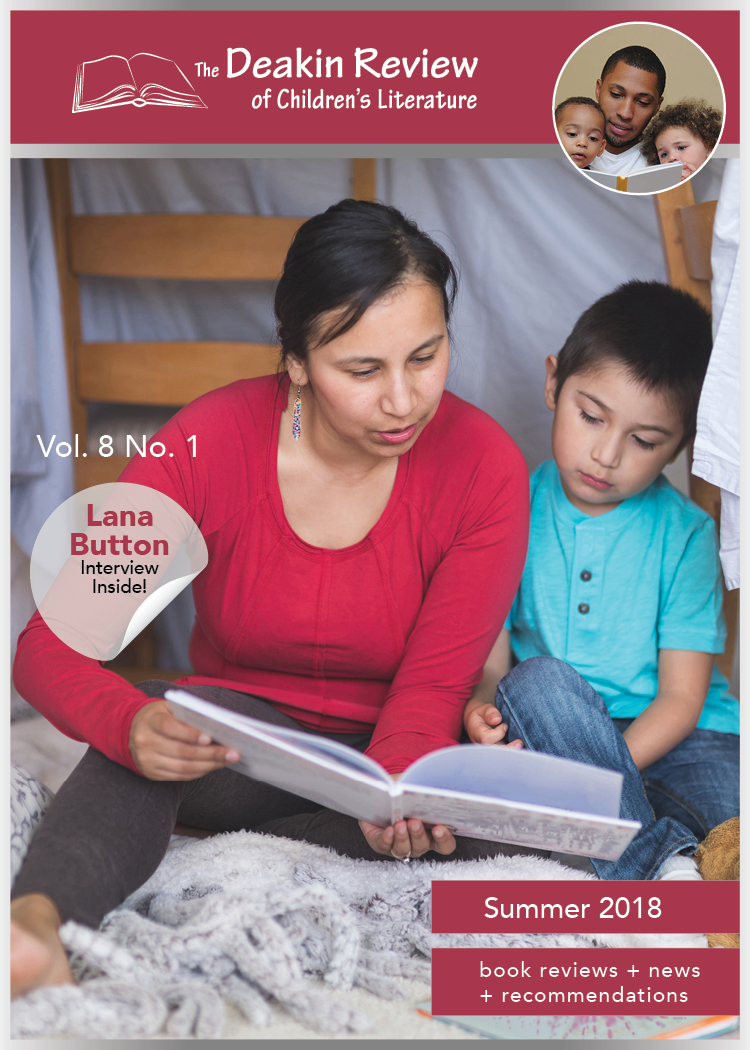The Definition of Children’s Literature is Expanding
DOI:
https://doi.org/10.20361/dr29357Abstract
***Access the interview with author Lana Button by clicking here.***
Dear Readers,
The definition of children’s literature is expanding, with digital options opening up whole new worlds of possibility. As I write these words, I have just learned from a report to British MPs, conveyed by the Telegraph of London, that in the United Kingdom, one child in four under the age of two owns their own tablet computer. Young children in the UK are apparently more likely to own a tablet than those in any other EU country. In that country, the average pre-school child, including the under-twos, spends more than an hour a day online.
I don’t know the equivalent figures for Canadian children, but I do know that even infants are aware of the potential for interesting material on their parents’ phones. Very young children indeed are able to swipe through the family photograph album and pick out the videos as offering the most bang for the viewing buck. I once watched a 17-month-old child in a restaurant as he inspected the mobile phones of his father and a group of his father’s friends, four or five phones in total. They were all different but this toddler, working without assistance as the adults chatted to each other, successfully deduced how to manage a number of the basics on each phone: the on/off switch, the volume control, the access point for apps. I was riveted by his sense of the basic rules: be mindful of the conventions, be alert for feedback, be careful, and don’t miss a thing!
It’s important that these digitally savvy babies and children continue to be exposed to picture books on paper, that they learn to master the refinements of page turning and how to hold the book right way up and proceed from left to right, top to bottom. It’s important that they learn about the magnificent world of the literature for the very young that is conveyed on the paper page with all its affordances and restrictions; their lives will forever be the richer for such exposure. But it’s also important that those who work with these digitally aware children be exposed to the many possibilities and opportunities offered by digital materials. And that’s why it’s vital for the Deakin Review to pursue reviews of multimodal and digital titles as well as those involving print on paper.
Sometimes we experience a kind of “either/or” panic, worrying that the digital will drive out the analogue. All our previous experience with assorted new media suggests that “both/and” is a more productive stance. Any material that makes the best possible use of its possibilities and affordances will be a compelling text: a paper book that capitalizes on the vast potential of words and pictures dancing together and that utilizes the page turn for moments of surprise and delight will appeal to children. A digital text – app, website, even database – that maximizes the potential of words, images, sounds, films, links, and more, will also call to readers.
I am delighted to see the Deakin Review go down the “both/and” road, opening its virtual doors to multimodal as well as print reviews. Today’s children can only benefit from access not just to all kinds of materials but also to informed and sympathetic adult helpers. Learning to make critical assessments of multimedia materials will help everyone be a better reader.
Margaret Mackey
Faculty of Education - School of Library and Information Studies
Published
How to Cite
Issue
Section
License
Authors who publish with this journal agree to the following terms:
- Authors retain copyright and grant the journal right of first publication with the work simultaneously licensed under a Creative Commons Attribution License that allows others to share the work with an acknowledgement of the work's authorship and initial publication in this journal.
- Authors are able to enter into separate, additional contractual arrangements for the non-exclusive distribution of the journal's published version of the work (e.g., post it to an institutional repository or publish it in a book), with an acknowledgement of its initial publication in this journal.
- Authors are permitted and encouraged to post their work online (e.g., in institutional repositories or on their website) prior to and during the submission process, as it can lead to productive exchanges, as well as earlier and greater citation of published work (See The Effect of Open Access).







